22 scholarly books by The Artist Book Foundation
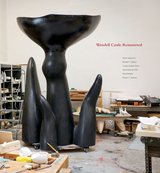
Wendell Castle Remastered
Glenn Adamson
The Artist Book Foundation, 2015
Wendell Castle (1932–2018), master furniture maker, designer, sculptor, and educator, was in the sixth decade of his extraordinary creativity when an emblematic exhibition of his signature works was mounted by the Museum of Art and Design 2016. It blended the artist’s seminal works with his latest collection, produced with digital technology. In part a self-reflection, this eponymous, full-color companion book examines some of Castle’s historically representative works as well as significant contemporary furniture pieces, continuing his highly respected and acclaimed sculptural/functional dialogue. Castle, ever the innovator, was remarkable for his openness to new technologies; he not only embraced an initially complex practice but has “remastered” it. His vast oeuvre represents a prodigious lifework that began in 1958 and aligns with the development of the American art furniture movement. The solo exhibition was a somewhat self-reflective examination of his early ground-breaking works that tested the boundaries of traditional furniture making by presenting his later innovations using new digital technologies such as 3D scanning and modeling, and computer-controlled milling—a digital “remastering” of his immense oeuvre. Unique perspectives on the master’s work are presented by informative essays by authors well-versed on Castle’s celebrated career.
[more]
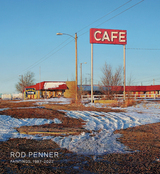
Rod Penner
Paintings, 1987–2022
David Anfam
The Artist Book Foundation, 2022
The abandoned and forgotten landscapes of rural southwestern towns are the favored subjects of Rod Penner’s paintings. His deft use of contrasts in his
images—despondency and hope, isolation and nostalgia—evokes memories of The Last Picture Show and elicits complex responses from viewers. “I’m interested in the look of things and the quality of being there,” he says. “A moment that is completely frozen with all the variety of textures; rust on poles, crumbling asphalt, light hitting the grass.”
Penner’s works are based on his photographs, digital video stills, and his experience of the rural landscapes of Texas and New Mexico. He depicts desolate, often deserted locations, the character of old houses and abandoned buildings, weather, and unique geography. His chosen scenes are infused with a cinematic quality that is the result of the exquisite light that he captures with his meticulous process. “The finished paintings should evoke contrasting responses of melancholy and warmth, desolation and serenity,” he says.
Penner’s hyperrealistic technique meticulously records both the iconic imagery and the beauty in the ashes of these once-prosperous streets and neighborhoods that still endure. The incredibly poignant scenes evoke a universalism, a collective experience seen through the lens of Americana. “You won’t find any hidden or overt socio-political meaning in my work and at the same time I hope that by utilizing what I find in the American landscape I’m able to connect to viewers on a deeper psychological level.”
[more]
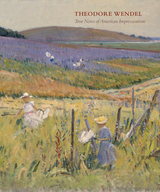
Theodore Wendel
True Notes of American Impressionism
Laurene Buckley
The Artist Book Foundation, 2019
One of the first American artists to bring French Impressionism home to develop on native soil, Theodore Wendel is likely the last to have a monograph that records his remarkable career and stunning oeuvre. His portraits and still lifes, and especially his landscapes, not only exemplify the joyous palette and vigorous brushwork of the genre, but they also mirror the idyllic, transient beauty of rural hamlets along the Massachusetts coast—Gloucester and Ipswich, the dual epicenters of his distinguished career.
One of the original “Duveneck boys” who studied in Munich at the Royal Academy, Wendel followed his mentor to Florence and Venice; he later went on to Paris and ultimately joined a colony of young artists at Giverny. The scenes and subject matter in the works he completed there are among the earliest by an American artist to adopt and evolve Impressionist strategies. Upon his return to America, he spent the next decades rendering scenes of the farmland and coast north of Boston that contemporary critics acclaimed as some of the best they had seen. Yet despite his talent and the significant accolades earned during his career, in the near-century following his death the recognition of his achievements has faded. The Artist Book Foundation is delighted to have the opportunity to remedy this situation with its forthcoming monograph on the artist, Theodore Wendel: True Notes of American Impressionism.
Laurene Buckley’s years of exhaustive research inform an engaging and detailed narrative of Wendel’s time in Europe and his many years capturing the essence of the farms and fishing villages along the rural coast of Massachusetts. Thanks to her efforts, the book will feature many of his best works, a number of which are in private collections. An informative introduction by William H. Gerdts provides significant artistic context for Wendel and explains the artist’s deft ability to draw the viewer into a scene. Concluding the monograph, an extensive chronology, exhibition history, and bibliography complete the scholarship on this long overdue tribute to a master of American Impressionism.
[more]
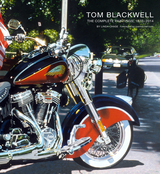
Tom Blackwell
The Complete Paintings, 1970–2014
Linda Chase
The Artist Book Foundation, 2018
Tom Blackwell (1938–2020) is primarily known for his work in Photorealism, a stylistic movement noted for its ardent embrace of photographic source material. In 1969, he began a series of brashly beautiful motorcycle paintings that established him as one of the founders and foremost artists of the movement. The myriad painterly possibilities of urban store windows became another abiding interest. In his store-window paintings, Blackwell captures the counterpoint between the idealized reality within the store display and the bustling urban life reflected in the glass. As author Linda Chase remarks, “The magic of these paintings resides in the artist’s ability to transform the arbitrary photographic information into dynamic and complex artistic compositions, revealing and clarifying the image while preserving its mystery.”
In conjunction with his Photorealist paintings, Blackwell has produced a related body of work that is allegorical in its perspective. Combining photo-derived images, he addresses themes such as the passage of time, the fragility of nature, and the continuity that weaves through human history. The paintings, rich in symbolism and interpretive possibilities, fascinate and impress viewers with the breadth of Blackwell’s abilities. “As a painter, I have been interested in dealing with the formal issues involved in juxtaposed and overlapping images,” he explains. “In my Photorealism work, my goal is to reveal something about the actual world and to explore our photo-mediated perceptions of it.”
Blackwell, born in Chicago in 1938, has deftly captured the vibrancy and visual excitement of urban street life for the past four decades and has had solo exhibitions across the United States and abroad. Tom Blackwell: The Complete Paintings, 1970–2014 is a comprehensive study of the artist’s work as well as his artistic development and process, and includes a compilation of his early paintings through to his most recent works. His paintings are in numerous collections, including the Museum of Modern Art, New York, NY; the Guggenheim Museum, New York, NY; the Detroit Institute of Arts, Detroit, MI; the Smithsonian Institution, Washington, DC; Yale University Art Gallery, New Haven, CT; and the Huntington Art Museum, Austin, TX.
[more]

Hodermarsky
Duncan Christy
The Artist Book Foundation, 2024
Daniel Hodermarsky (1924–1999) was the son of Slovak immigrants who emigrated from Hačava to settle and work in the coal fields of Pennsylvania and later in the auto-manufacturing industries of Ohio. He served in World War II on the Western front and was awarded two presidential citations, two Croix de Guerre, and one combat star. He returned home with severe and persistent posttraumatic stress disorder that left an indelible mark on his life and art.
Hodermarsky had a distinguished teaching career at the Cleveland Institute of Art from 1957 to 1969. Throughout the 1960s, he taught in Cleveland's public schools and started an art program for inner-city youth under the Federal Title 3 Act to promote integration through arts education. From 1969 to 1989 he taught at Deerfield Academy in western Massachusetts, founding its art department and serving for several years as department chair and director of the school's Hilson Gallery (now the von Auersperg Gallery). He mentored notable artists, including Stephen Hannock and Michael Tracy.
Throughout his career, Hodermarsky's work embraced both the representational and the abstract. His early works experimented with new media (such as Dayglo paint) and new styles such as Op Art and performance. In the 1970s and beyond, he engaged landscape—rural, urban, and imaginary—wherein he explored the interplay of terrain (land or water, horizon, and sky). The human figure—Slovak farmers, wounded or dismembered soldiers, and mythical and historical figures—were among his favorite subjects. He was fascinated by how age, human nature, and personality combine to create the physical form. His eclectic themes mirror his own unique complexities and experiences. Later in his career, he focused on abstract works that reflect the intricate spaces of both his psyche and shared human experience.
A deeply spiritual man with a strong religious faith, Hodermarsky's abstract paintings ask the existential questions that have challenged humankind across millennia. By showing us his own experience of these great mysteries, his art underscores life's abiding beauty. Over his long career of interpreting the world in which he lived, Hodermarsky invites us to inhabit a realm filled with joy, reverence, and passion.
[more]
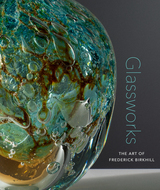
Glassworks
The Art of Frederick Birkhill
Samantha De Tillio
The Artist Book Foundation, 2020
Glass as an art form has an ancient tradition; the archaeological record suggests that artisans in Egypt and Mesopotamia were fabricating glass vessels and ornaments during the fourth millennium BCE. Its durable nature, range of colors, malleability, and most of all, its optical transparency are qualities that have made glass a premiere art medium. Over a lifetime, Frederick Birkhill (1951–2023) has explored the unique qualities of glass and the numerous techniques and intricacies of working with it. The result of these decades of study is a body of work that is extraordinary in scope, technical expertise, and sheer virtuosity. The Artist Book Foundation is delighted to present a new monograph honoring this gifted artist: Glassworks: The Art of Frederick Birkhill.
From his time in England at Burleighfield House, the studio of stained-glass artist Patrick Reyntiens, to his unprecedented visit to Lauscha, the village in the former East Germany famous for both its art and scientific glass production, and his subsequent career as an explorer, teacher, and master of the glass arts, Birkhill has devoted himself to furthering the appreciation of the medium and sharing his vast experience with colleagues, collectors, and students. His works appear in numerous museum collections, including those of The Corning Museum of Glass, the Museum of Arts and Design, the Mint Museum, the Detroit Institute of Arts, and the Smithsonian.
Complementing the scholarly contributions by authors with significant backgrounds in the glass arts, the book features in its extensive plate section the lavish photography of Henry Leutwyler, which offers readers an opportunity to examine the complex details and artistic mastery of Birkhill’s oeuvre. In addition, the monograph offers a glossary of glass-art terms, a detailed chronology of the artist’s life, his extensive exhibition history, and a list of the numerous awards he has received. For those who are passionate about the glass arts, this monograph is a feast for the eyes.
[more]
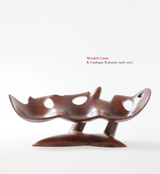
Wendell Castle
A Catalogue Raisonné, 1958–2012
Emily Evans Eerdmans
The Artist Book Foundation, 2014
Sculptor and furniture designer Wendell Castle (1932–2018) carved a distinct path in furniture making over nearly six decades of a distinguished career, and this long-awaited recording of his oeuvre, Wendell Castle: A Catalogue Raisonné, 1958–2012, beautifully presents the extraordinary scope of his artistry and craftsmanship. The voluminous accounting of his works, beginning with Castle’s earliest, mid-century works through to his unabashed experiments with unconventional materials (gel-coated fiberglass and metallic automobile paint) and his latest signature wood laminations, is comprehensive and detailed. Three essays of varying perspectives introduce the catalogue raisonné followed by an extensive accounting of his enormous oeuvre, his exhibitions, numerous awards, and the collections of his works, as well as a substantive bibliography. With his organic and whimsical approach to his various mediums, he seamlessly merged sculpture and design into one discipline, obscuring the distinction between the two. He invented the technique of carving stacked laminations of wood, and his later explorations into the qualities of fiberglass as a sculptural medium are unparalleled. Castle is widely collected and his works are in the permanent collections of more than 40 museums and cultural institutions around the world, including The Metropolitan Museum of Art (New York); Museum of Modern Art (New York); Smithsonian American Art Museum (Washington, DC); Musée des beaux-arts de Montréal (Quebec, Canada); and the Victoria and Albert Museum (London).Castle has also been the recipient of many honors and awards, including four National Endowment for the Arts grants, three honorary degrees, the American Craft Council Gold Medal, and a Life-time Achievement Award from the Brooklyn Museum of Art.
[more]
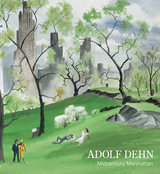
Adolf Dehn
Midcentury Manhattan
Philip Eliasoph
The Artist Book Foundation, 2017
Adolf Dehn (1895–1968), American painter in multimedia and acclaimed master lithographer, left his Minnesota hometown after formal training at the Minneapolis Art Institute to study at the Art Students League in New York. He toured Europe in the early 1920s, quickly acclimating to the continental lifestyle and adeptly depicting its nuances and idiosyncrasies with prolific lithographs and sketches. His critical and satirical renderings of the political movements, social conventions, and governmental policies in post–World War I Europe during “Le Crazy Years” gave the Midwestern artist ample material for his growing body of work.
Sailing back to the United States in 1929, Dehn survived the Great Depression with commercial artwork and contributions to popular magazines such as The New Yorker, Vogue, and Vanity Fair. His clever drawings that reflected the Jazz Age’s culture and fashionable society made him a favorite of Frank Crowninshield, Vanity Fair’s renowned editor.
During this time, while Dehn captured the heyday of Manhattan’s burlesque theaters, lively Harlem nightclubs, impressive skyline, and busy harbor, he was continuously drawn to Central Park—his predilection for the city’s magnificent green space was a sustaining source of inspiration and subject matter. Adolf Dehn: Midcentury Manhattan candidly examines the life and work of this exceptional, adventurous, and intrepid artist as he moved skillfully and capably between lithography, ink-wash drawings, gouache, casein painting, and watercolors. Combining numerous vintage photographs with newly discovered, Manhattan-inspired prints and drawings from the collections of, among others, the Whitney Museum of American Art, MoMA, and The Metropolitan Museum of Art, Adolf Dehn: Midcentury Manhattan traces how Dehn’s art reflected the spirit, pulse, and uniquely American tonalities of The City of Dreams.
[more]
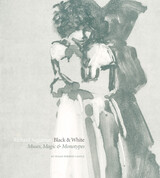
Richard Segalman Black & White
Muses, Magic & Monotypes
Susan Forrest Castle
The Artist Book Foundation, 2015
For many, the name Richard Segalman conjures up a vision of light-infused paintings of women gathered on a beach, gazing out the window of a New York City brownstone, or dressed in costumes from another era. But just as Edgar Degas, approaching his 60th year, surprised gallery goers with an exhibition not of ballerinas or race horses, but of highly atmospheric monotype landscapes, so too does Segalman surprise us with this exceptional collection of monotypes he began to produce in 1993, at nearly 60. “I reached a sort of a plateau and needed a new direction,” says the artist. “I came across a monotype… took a course… made one and I was hooked.”
The significance of Segalman’s shift into this medium is most powerfully conveyed through his arresting black-and-white prints that range from anonymous crowds on Coney Island beaches or New York City streets to a solitary figure in private contemplation. This monochromatic focus makes perfect sense: Segalman’s first gallery appearance in New York—a sold-out show that gave him the courage to embrace the life of an artist—consisted entirely of black-and-white charcoal drawings, several stunning examples of which open this book. Currently, Segalman’s work can be found in many public and private collections, including The Metropolitan Museum of Art, New York; the Museum of Fine Arts, Boston; the Hirshhorn Museum and Sculpture Garden, Washington, DC; and the Fogg Museum, Cambridge, Massachusetts.
Author Susan F. Castle’s essay about the artist and his muses—the people, places, and things for which Richard Segalman has an abiding love—illuminates the exceptional work collected for this monograph. She combines excerpts from interviews with the artist and the three master printmakers with whom he has worked in Woodstock and Brooklyn, New York, and in Santa Fe, New Mexico. In addition, Anthony Kirk’s insightful introduction provides an essential historical perspective on the artist and his printmaking process.
[more]
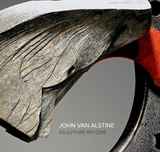
John Van Alstine
Sculpture, 1971–2018
Howard Fox
The Artist Book Foundation, 2019
For nearly fifty years, John Van Alstine has created abstract sculptures forged from steel and stone. In John Van Alstine: Sculpture, 1971–2018, three notable essayists explore the sculptor’s abstract landscapes that reveal the complex synergy between natural forces and man-made elements; by grappling with the challenges of balancing stone and steel, Van Alstine’s indoor, outdoor, and site-specific sculptures are measured and calculated, yet simultaneously poetic; their swooping angular lines create expansive spaces beyond the limits of their stone-and-steel frames to unveil our collective history and imagination, illuminating a deft interplay of natural energies and the human experience.
The artist weaves into his works elements of mythology, celestial navigation, implements, human figures, movement, urban forms, and found objects, while using motion, balance, and inertia to incorporate the eternal forces of gravity, tension, and erosion. In an essay on his drawings, Van Alstine details the critical role they play in the initiation and planning of his projects, offering the reader a firsthand perspective on the artist’s creative process. Van Alstine’s works have been featured in numerous solo and group exhibitions and are found in the permanent collections of the Carnegie Museum of Art, the Hirshhorn Museum and Sculpture Garden, the Smithsonian’s National Museum of American Art, and the Phillips Collection, to name but a few. His works are also found in numerous public and private collections. The Artist Book Foundation is gratified to announce the publication of this lavishly illustrated monograph on an esteemed and prolific contemporary artist.
[more]
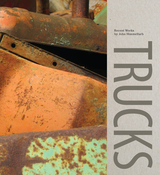
Trucks
Recent Works by John Himmelfarb
Scott Griffin
The Artist Book Foundation, 2014
With sculpture, paintings, prints, and drawings, award-winning artist John Himmelfarb explores the iconic American truck. An in-depth consideration of the vehicles that are intrinsically and culturally significant to the American landscape, TRUCKS: Recent Works by John Himmelfarb showcases the artist’s diverse and lighthearted approach, adeptly shifting between mediums, style, and message during his decade-long contemplation of trucks and their specific functions. Under his skillful hands, the utilitarian vehicles of commerce and construction become unique and provocative art forms.
In 2005 and 2006, the truck as narrative becomes center stage for Himmelfarb’s work. With his seamless, animated traverse of multiple mediums, viewers cannot help but smile as they appreciate the common truck through unique perspectives. In 2007, another tectonic change occurs in Himmelfarb’s pursuit of his theme: as a result of a three-month residency at the John Michael Kohler Arts Center’s Arts/Industry program, he begins his first meaningful foray into three-dimensional works.
Himmelfarb’s artworks can be found in distinguished international collections including the Art Institute of Chicago; the Baltimore Art Museum; the British Museum, London; the Boston Public Library Print Collection; the Cleveland Museum of Art; the Fogg Art Museum, Harvard University, Cambridge; the High Museum of Art, Atlanta; the Museum of Modern Art, New York; and the University of Michigan Art Museum, Ann Arbor.
[more]
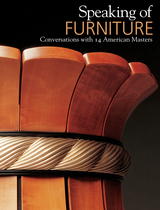
Speaking of Furniture
Conversations with 14 American Masters
Warren Eames Johnson
The Artist Book Foundation, 2013
Speaking of Furniture: Conversations with 14 American Masters is a fresh, stimulating, and in-depth examination of the modus operandi of 14 accomplished—and diverse—furniture makers. An engaging history of studio furniture, this colorful, informative study includes engaging conversations with James Krenov, Wendell Castle, Jere Osgood, Judy Kensley McKie, David Ebner, Richard Scott Newman, Hank Gilpin, Alphonse Mattia, John Dunnigan, Wendy Maruyama, James Schriber, Timothy S. Philbrick, Michael Hurwitz, and Thomas Hucker. The insightful interviews illuminate how these creative and gifted craftspeople arrived professionally and what their craft means to them individually.
In his enlightening foreword, Edward S. Cooke, Jr. maps out the background of the studio furniture movement. Author and furnituremaker Roger Holmes offers an insider’s perspective on the art and craft of producing exquisite contemporary furniture in his conversational introduction and maintains, “Art or craft, this is very personal work.” This elegant presentation skillfully sheds light on the thought processes and techniques of a celebrated and exceptional gathering of studio furniture makers who are as unique as they are stellar. As sculptor and furniture designer Wendell Castle remarks, “What I admired was that . . . fine art and craft were the same thing.”
[more]
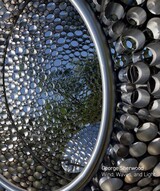
George Sherwood
Wind, Waves, and Light
June LaCombe
The Artist Book Foundation, 2024

Tom Slaughter
Glenn Lowry
The Artist Book Foundation, 2019
Of Tom Slaughter, Henry Geldzahler, the first curator of twentieth-century art at The Metropolitan Museum of Art, commented: “The quality of freshness, the familiar world re-seen, from the water towers of New York City to the rural pleasures of boating, is the most immediately arresting aspect of Tom Slaughter’s art. . . . Bold bright colors swiftly laid down echo with resonances: Léger and Stuart Davis, Raoul Dufy and Roy Lichtenstein.” Slaughter’s work, with its seemingly effortless whimsy rendered with a strong sense of line, color, and rhythm, has also been compared to Matisse. His Pop-inflected drawings, prints, paintings, and illustrations convey his love of life as he relentlessly explored the complexities of the urban scene or the simple pleasures of boating. The Artist Book Foundation is pleased to announce the publication of Tom Slaughter, an extensive monograph of the artist’s enormous body of work that celebrates his enduring optimism, personal and artistic honesty, and charming brashness in a landscape of pure joy.
[more]
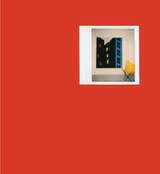
Tom Slaughter
David Marshall
The Artist Book Foundation, 2019
Of Tom Slaughter, Henry Geldzahler, the first curator of twentieth-century art at The Metropolitan Museum of Art, commented: “The quality of freshness, the familiar world re-seen, from the water towers of New York City to the rural pleasures of boating, is the most immediately arresting aspect of Tom Slaughter’s art. . . . Bold bright colors swiftly laid down echo with resonances: Léger and Stuart Davis, Raoul Dufy and Roy Lichtenstein.” Slaughter’s work, with its seemingly effortless whimsy rendered with a strong sense of line, color, and rhythm, has also been compared to Matisse. His Pop-inflected drawings, prints, paintings, and illustrations convey his love of life as he relentlessly explored the complexities of the urban scene or the simple pleasures of boating. The Artist Book Foundation is pleased to announce the publication of Tom Slaughter, an extensive monograph of the artist’s enormous body of work that celebrates his enduring optimism, personal and artistic honesty, and charming brashness in a landscape of pure joy.
[more]
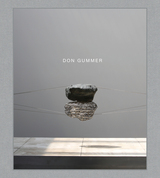
Don Gummer
Peter Plagens
The Artist Book Foundation, 2021
The trajectory of Don Gummer’s career as a sculptor began in New York City in the late 1970s with his wall reliefs of painted wood, carefully layered geometric works exhibiting a strong architectural influence. Moving beyond wood to stone, bronze, stainless steel, aluminum, and glass as his primary materials, his artworks evolved into subtly inventive freestanding sculptures, often of monumental scale, that exhibit his unfailing attention to craftsmanship and detail. The Artist Book Foundation is delighted to announce the forthcoming publication of Don Gummer, a new monograph on the artist and his highly acclaimed body of work.
Gummer was born in Louisville, Kentucky, in 1946 and grew up in Indianapolis, Indiana, where he attended the Herron School of Art and Design at Indiana University. He subsequently received both a BFA and an MFA from Yale University’s School of Fine Arts. In a 2001 interview with Peter Plagens, American artist and art critic, Gummer described his interest in sculpture as “the recontextualization of natural phenomena, of unaltered things brought into aesthetic balance by choosing and placing.” Using balance, proportion, and his unique sense of harmony, the artist is able to make durable materials seem almost buoyant. Negative space becomes an intrinsic element in his work, imparting a sense that his exquisite, seemingly permanent forms are ultimately as fleeting as any of nature’s creations would be.
The artist’s works can be found in many public collections including the Butler Institute of American Art in Youngstown, Ohio; the Massachusetts Museum of Contemporary Art in North Adams, Massachusetts; and Chase Manhattan Bank and Chemical Bank, both in New York City. He has received a number of awards from prestigious organizations such as the Louis Comfort Tiffany Foundation and the National Endowment for the Arts, and he was Visiting Artist at the American Academy in Rome. Some of his most recent sculptures appeared around Indianapolis in conjunction with his 2016 exhibition, Back Home Again.
[more]
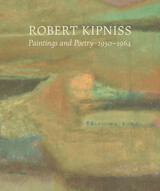
Robert Kipniss
Paintings and Poetry, 1950–1964
Marshall N. Price
The Artist Book Foundation, 2013
A comprehensive look at a memorable period in the celebrated painter and printmaker’s life and career, Robert Kipniss: Paintings and Poetry, 1950–1964 is the result of his many arduous months revisiting his more-than-half-a-century-ago writings, poems that were stashed away and essentially forgotten. “Some of the poems are straightforward, some are infused with surreal irony, and some are angry,” says Kipniss in his candid and honest preface. Thoughtful and articulate from conception to completion, his never-before-published poems are choreographed with his early paintings in this monograph’s contemplation of these influential and foundational fourteen years. “When I stopped writing [in 1961] my vision was no longer divided between word-thinking and picture-thinking: these approaches had merged and in expressing myself I was more whole,” reflects Kipniss in his retrospective musings.
This written and visual account of previously unpublished poems and critically acclaimed early paintings includes two astute and illustrative essays that further engage the reader in the evolution of the artist’s prolific oeuvre. His prints, drawings, and paintings are remarkable for their eloquence and refinement, earning him international recognition for his expansive landscapes and smalltown vistas, as well as quiet interiors and intimate still lifes. Thoughtful and articulate from conception to completion, his never-before-published poems are choreographed with his early paintings.
Readers of this seminal volume are all the richer for catching a glimpse of an intensely personal segment of this accomplished artist’s private history. In an unambiguous assessment, Kipniss elaborates, “The most significant insight that arose in this undertaking...came when I began to collate reproductions of my paintings of the 1950s. I could clearly see that my work in the two mediums were from very differing parts of my psyche, and that while they were both in themselves completely engaged, they were not in any way together.”
Kipniss’s work can be found in the permanent collections of The Metropolitan Museum of Art, New York, the Whitney Museum of American Art, New York, The British Museum, London, the Albertina, Vienna, Austria, the Bibliothèque Nationale de France, Paris, the Los Angeles County Museum of Art, Los Angeles, The Museum of Fine Arts, Boston and the Morgan Library, New York, among others.
[more]
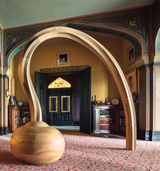
River Crossings
Contemporary Art Comes Home
Jason Rosenfeld
The Artist Book Foundation, 2015
In a unique and groundbreaking 2015 presentation of important contemporary art rarely seen in the traditional environs of the Hudson River Valley, the Thomas Cole National Historic Site and Olana, Frederic Edwin Church’s Persian-inspired mansion, showcased the work of contemporary American artists such as Chuck Close, Cindy Sherman, Maya Lin, Martin Puryear, and Gregory Crewdson, some of the 30 artists featured in the exhibition. Stephen Hannock, celebrated Luminist painter and one of the exhibition’s co-curators, stated that “this is a terrific opportunity to open up contemporary art, as well as these historic properties, to audiences who will see firsthand these shared artistic concerns.”
The works of art selected for the exhibition were shown at the two venues to encourage visitors to experience both of the distinguished properties and the grandeur of their surroundings, and to present a complete overview and understanding of these contemporary works in a location where many art historians believe American art was born. The accompanying publication, River Crossings: Contemporary Art Comes Home, provides readers with a lavish record of this extraordinary and innovative exhibition, and offers unique and highly informative perspectives on the continuity of the American artistic tradition in two of the nation’s most historic sites.
[more]
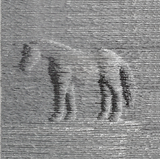
Boaz Vaadia
Sculpture
Wendy Steiner
The Artist Book Foundation, 2016
Boaz Vaadia (1951–2017), the internationally acclaimed sculptor, amassed a prodigious body of work over his 40-year artistic career. With Boaz Vaadia: Sculpture, Grounds For Sculpture in Hamilton, New Jersey, presented the first retrospective exhibition of his indoor and outdoor works in 2016 in a comprehensive survey of the artist’s journey from abstraction to figuration. Detailing 125 works installed in two buildings and throughout the 42-acre sculpture park, the exhibition’s color catalogue presents Vaadia’s ritualistic and highly personal early works, his later sculptures in stone, slate, and bronze, and his explorations of the ancient genre of bas-relief. With the global recognition his art has received, he continued working at the edge, discovering new possibilities in the constantly shifting grounds of his sculpture. Boaz Vaadia: Sculpture is a celebration of the artist’s long and prolific career, and his unwavering advancement of his art.
[more]
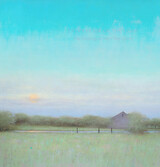
Every Hour of the Light
The Paintings of Mary Sipp Green
Beth Venn
The Artist Book Foundation, 2014
American landscape painter Mary Sipp Green, based in the bucolic Berkshire Hills of Massachusetts, has a superlative ability to engage the viewer in the emotive atmosphere of her landscapes and seascapes. The intensely saturated colors in her works evoke an immediate sense of place and a unique perspective on an intimate tableau. Sipp Green achieves an ethereal, nuanced quality in her paintings that imparts a refined and inimitable serenity. In Every Hour of the Light: The paintings of Mary Sipp Green, many of the subjects she paints—salt marshes, barns, meadows, rivers, and the occasional cityscape—are captured in the exquisite twilight of early evenings or a luminescent sunrise. The effect is dreamy yet grounded and familiar.
Sipp Green states, “While my preferred medium has always been oil on linen, my methods, techniques, and aesthetic aims have all undergone significant transformations since I first began. I learned my craft in the studio, painting still lifes and portraits, as well as landscapes drawn directly from nature. Over time, I became increasingly engaged with more abstract and spiritual aspects of the landscape form and I began to pursue a less representational, more expressive style.” When describing her “diffuse quality of color,” she explains, “I use many layers of paint, allowing each to dry before the next is applied. Along the way, the surface of the paint is often refigured in unpredictable ways, and there is much that has to be scraped, sanded, destroyed and reapplied before the essence of a place, its mood and atmosphere, finally emerges onto the canvas.”
Sipp Green’s work is widely collected in prominent private and public collections, including the D’Amour Museum of Fine Arts, part of the Springfield Museum of Art quadrangle in Springfield, Massachusetts, where her large oil painting Twilight Falls in South County hangs in the museum’s entryway, and The Butler Institute of American Art, Youngstown, Ohio.
[more]

Figuration Never Died
New York Painterly Painting, 1950–1970
Karen Wilkin
The Artist Book Foundation, 2020
By about 1950, forward-looking New York painting was seen as synonymous with abstraction, especially charged, gestural Abstract Expressionism. But there was also a strong group of dissenters: artists, all born in the 1920s and many of them students of Hans Hofmann, who never lost their enthusiasm for recognizable imagery, without rejecting Abstract Expressionism’s love of malleable oil paint. Although most of them began as abstract artists, they all evolved into painters working from observation, using a fluid, urgent touch to translate their perceptions into eloquent, highly individualized visual languages, almost always informed by the hand; that is, unlike the Color Field and Minimalist artists, these artists remained, for the most part, “painterly” painters. In light of their important contributions to twentieth-century American art, The Artist Book Foundation presents the catalogue for the Brattleboro Museum & Art Center's eponymous 2020 exhibition, Figuration Never Died: New York Painterly Painting, 1950–1970.
These rebellious artists include Lois Dodd, Jane Freilicher, Paul Georges, Grace Hartigan, Wolf Kahn, Alex Katz, Albert Kresch, Robert de Niro Sr., Paul Resika, and Anne Tabachnick. The compelling figurative work they made between about 1950 and 1970, in contrast to the prevailing Abstract Expressionism of the time, constitutes a significant chapter in the history of recent American Modernism. Their work not only greatly expands our conception of the story of New York painting, but it also presages and contextualizes today’s multiplicity of artistic concepts and processes. Given both the aesthetic diversity of today’s New York art world and the dependence of many younger artists on digital media or the appearance of digital media, it seems an appropriate moment to reconsider the work of these daring pioneers, as both precursor and opposition to current norms. It is especially important to do this now, while some of these artists are still alive.
[more]
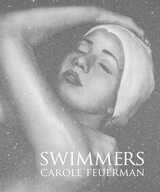
Swimmers
Carole Feuerman
John Yau
The Artist Book Foundation, 2014
Realist sculptor Carole A. Feuerman’s human-figure sculptures express a refreshing perspective on the mundane but intensely personal activities of modern life. Her powers of observation and versatility find unique expression through various materials that include marble, bronze, vinyl, and painted resins, while she incorporates both ancient and contemporary methods in the creation of her works. Swimmers: Carole Feuerman is a gorgeous and shimmering glimpse at transitory, contemplative moments in time, often captured in a veil of clear resin that replicates tumbling water droplets.
In his astute and insightful essay, John Yau describes Feuerman’sexquisitely rendered figures as subjects “caught in a moment of transition that radiates an intense eroticism.” She evokes an inward life for her figures that invites our speculation, while revealing a mysterious chasm between them and the viewer that can never be plumbed. We cannot know their thoughts and perhaps that is exactly the point. Feuerman fuses the tactile nature of her sculpture with a visual verisimilitude that provides us a fleeting glimpse into private and isolated environments—women stepping out of the shower, in the rain, or swimming—that suggest a meditative bliss.
Feuerman’s museum retrospectives have included exhibitions at the Venice Biennale; the Smithsonian National Portrait Gallery in Washington, DC; The State Hermitage in St. Petersburg, Russia; The Palazzo Strozzi Foundation in Florence, Italy; and the Circulo de Bellas Artes in Madrid, among others. Her work is featured in public, private, and corporate collections, including Grounds For Sculpture, Trenton, NJ; the El Paso Museum of Art, El Paso, Texas; the Bass Museum of Art, Miami Beach, FL; and art-st-urban, Lucerne, Switzerland. Her large-scale Olympic Swimmer was featured in the Olympic Fine Arts exhibition at the 2008 Summer Games in Beijing.
[more]
READERS
Browse our collection.
PUBLISHERS
See BiblioVault's publisher services.
STUDENT SERVICES
Files for college accessibility offices.
UChicago Accessibility Resources
home | accessibility | search | about | contact us
BiblioVault ® 2001 - 2024
The University of Chicago Press









